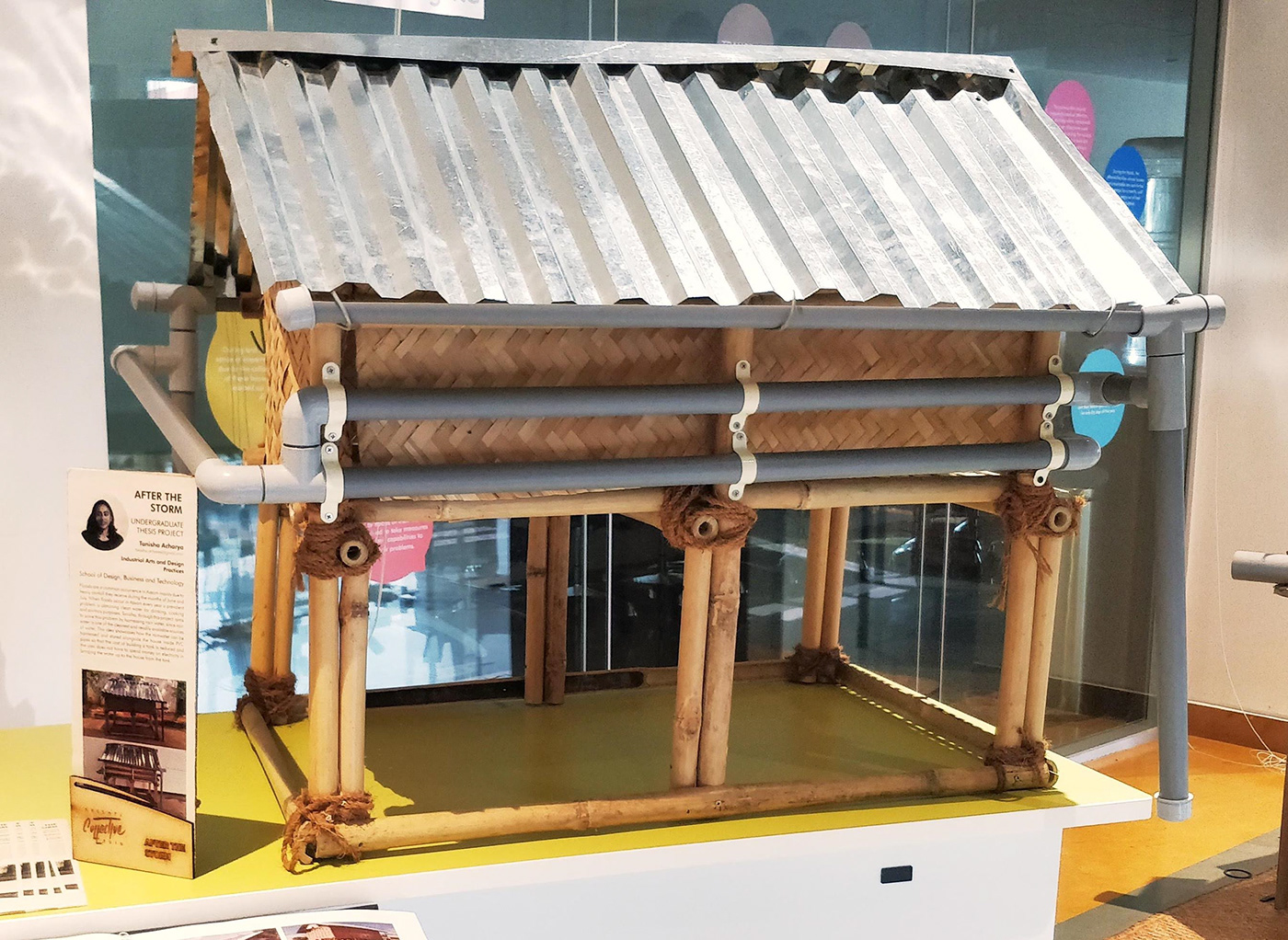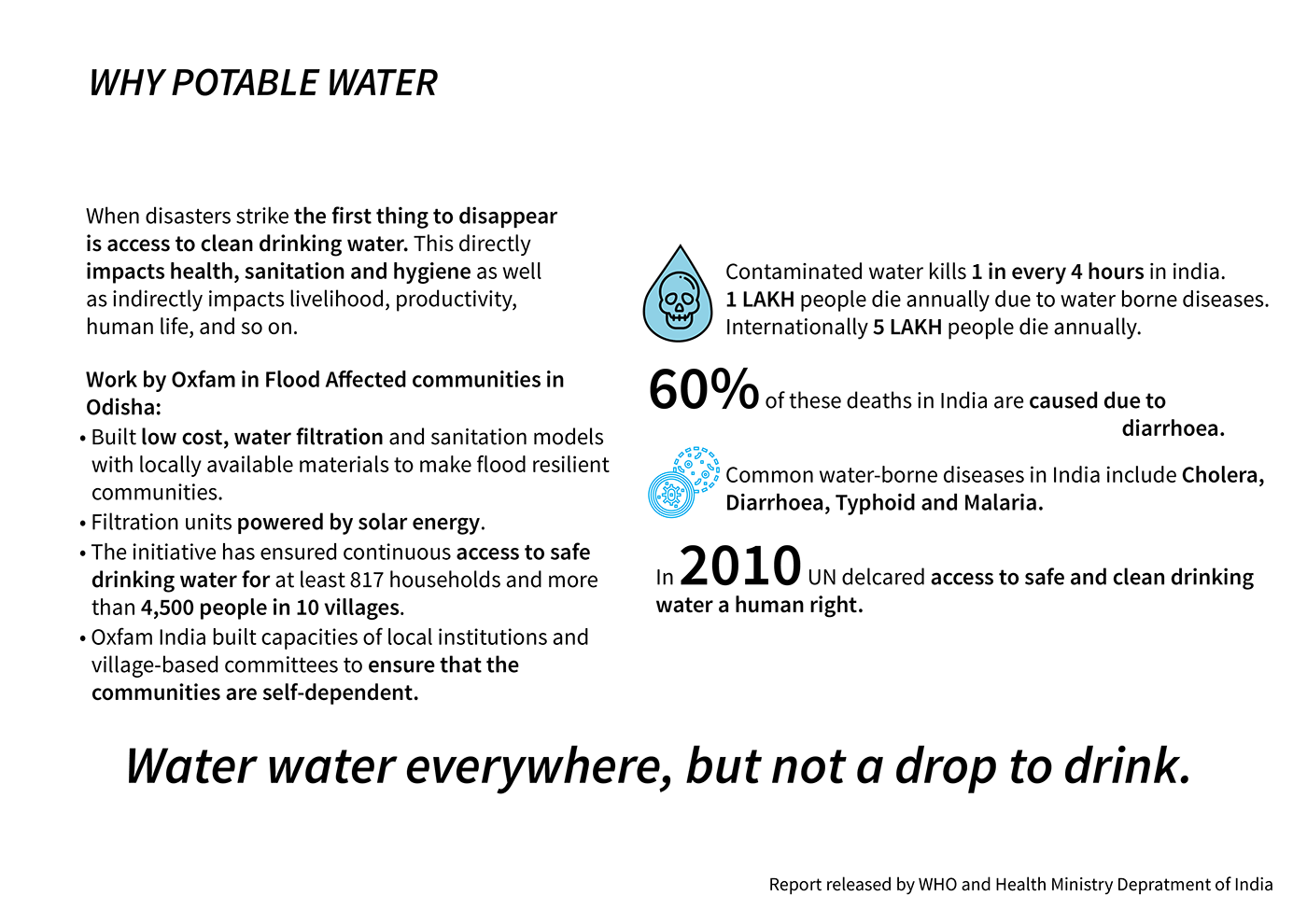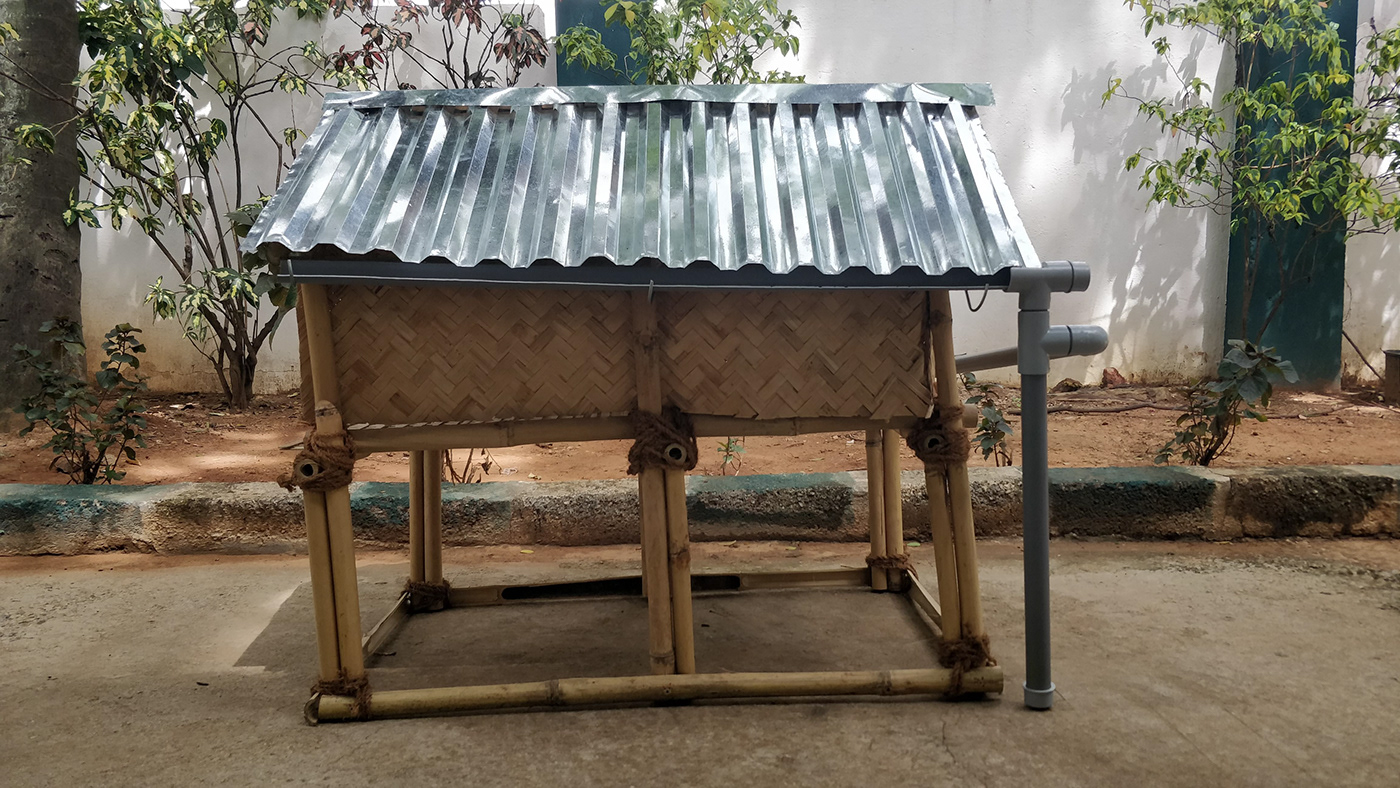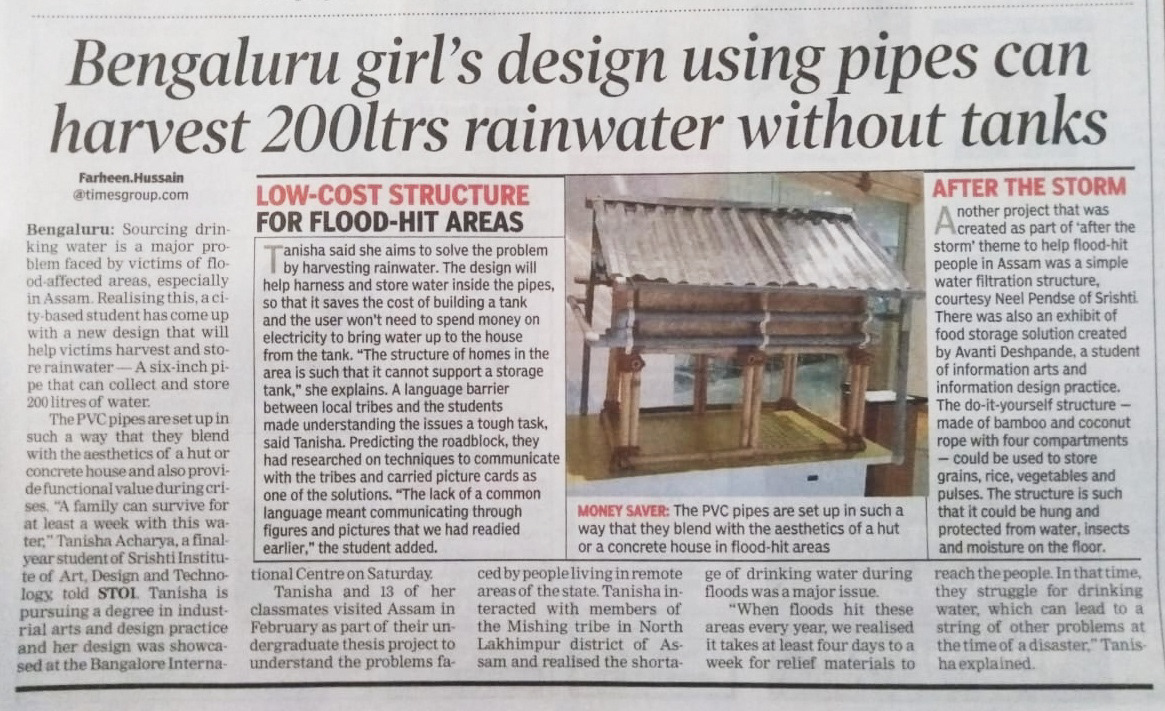
My prototype on display at the Srishti Expo 2019, at Bangalore International Centre.
As a part of my thesis project in collaboration with The SELCO Foundation, I travelled to meet the Mising Tribes of North Lakhimpur District in Assam. It is a community most famous for their food as well as their hand-woven clothing. The Mising community lives in stilt houses made of bamboo, supported by concrete beams. While they used to have thatch roofs, most of the houses have now switched to GI roofing. The village does not have an electricity connection, and for water they use the hand pumps installed in the village by an NGO called IGSSS. The Mising Tribe is a riverine tribe and hence lives on the banks of the Brahmaputra, which means during the monsoon months of June, July and August, the village gets flooded every year.






Through my research I found out that a major problem the people face during the floods is that they need to wait a week after the floods hit for the relief material (food, water, blankets, etc.) to arrive from the NGOs. Till then they have to make do with whatever little they have managed to store that is uncontaminated by flood water. The inaccessibility of the hand-pumps during the floods forces the locals to resort to using the flood water itself (passed through a rudimentary filter and boiled before consumption), for drinking and cooking purposes. Using this contaminated flood water aggravates the issues faced by the tribe by causing diseases like dysentery and diarrhoea, leading to unnecessary deaths.

My solution to this this drinking water crisis during the floods, is to use the well-known method of rain-water harvesting. Since rain-water is one of the cleanest sources of water available, my solution uses the existing infrastructure of the stilt houses, to store the rain water that causes the floods. The system stores enough water to sustain a family in a house for a week, after which the relief material would arrive.


Since the houses already had a GI roof, installing collection pipes was easy, but the bamboo structures would not be able to support a water tank, nor did they have electricity to pump out water from an underground tank. Taking an average of six people per house, I aimed to store at least 200L of water which would sustain the family for a week. Since the houses had concrete beams, my solution was to use PVC pipes supported on these beams to store the water, as the weight would then get distributed. The houses are 40 ft x 15ft (on an average), a PVC pipe of diameter 6 inches could store around 200 L of water if used along the long side of the house. At the end of the pipe there would be a rudimentary filter for dust particles and using a step down connector and a tap, the house would have a direct water connection inside. This system of pipes is angled ever so slightly so that gravity would direct the flow of water, thus eliminating the need for electricity. The locals can boil this water and use it for drinking, as a precaution during the floods. Moreover the system uses PVC pipes which are easily acquirable and considerably cheaper than building a tank, the system is also customisable to each family, they can either reduce the size of the storage pipes or add more rows depending on the water quantity they would need to sustain them during the flood. This is a stopgap solution for the first week when the heavy rains and floods hit the village all of a sudden, after which the relief material from the NGOs will arrive. This solution is meant to empower the tribe to deal with a pressing problem they face every year, and kickstart in them a design thinking process that would enable them to take this concept further as time goes on.

A scaled down model of the stilt houses in Assam upon which I have showcased the system of pipes for rain water harvesting.





My project appeared in the Sunday Times of India, dated 08th September, 2019.






